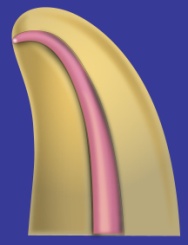What is endodontics(or root canal treatment)? Teeth are composed of a hard structure surrounding a soft, living tissue. This is called the pulp(sometimes called ˇ°the nerveˇ±), which contains blood vessels, fibers, and nerves. Endodontics(root canal treatment) is the diagnosis and treatment of inflamed or diseased pulps. Why does the pulp(ˇ°nerveˇ±) become inflamed or diseased? Some of the main caused of pulp problems include tooth decay, the treatment of tooth dacay(fillings, crowns, and so on), trauma, and advanced gum disease. How can you tell if the pulp is inflamed or diseased? Some of the symptoms of an inflamed pulp include prolonged toothache when you have hot or cold liquids in your mouth, spontaneous toothache, pain with chewing or biting, and pain when you lie down. Some of the signs of diseased pulp include evidence of decay or evidence of a shadow (abscess) at the end of the root, drainage, or swelling. How do you do root canal treatment? After the tooth is numb, a rubber sheet is isolated the tooth and make an opening into the center of the tooth to reach the pulp(nerve). With very small instruments to remove the pulp and sculpt the space it occupied.To sterilize, fill and seal the root canal inner space with a rubber-like material that will prevent bacteria from entering this space. To restore the missing parts or broken piece of the tooth, a post may be placed inside the tooth. The toooth may also require a crown. |
||||
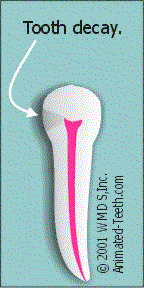 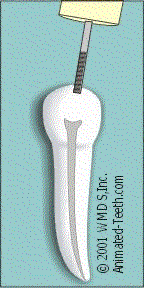 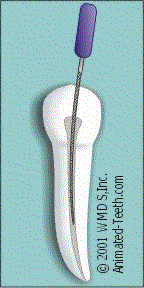 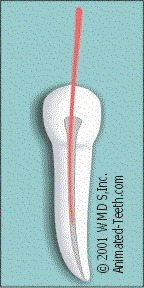 |
||||
Using rotary equipment to treat patients along with a sonar-like instrument that finds the exact end of the tooth root. High torque handpieces are used with titanium files to mechanically and rapidly open a canal . This can significantly decrease treatment time.
Titanium is a metal that NASA (National Aeronautics and Space Administration) uses to make spacecraft and the Soviets used titanium to make nuclear submarines. It's a special metal that is stronger than steel and is very light. Titanium is also extremely flexible. It can bend into very unusual shapes and return to it's original shape without any permanent distortion.
One of the major problems of the old stainless steel root canal files was that they could not always bend to the shapes of all root canals. The old files would sometimes cut their own pathway out of the sides of teeth. The result was often a lost tooth.
Titanium files easily bend to the strange shapes of root canals. They are really strong and don't break as easily as the old stainless steel root canal files.


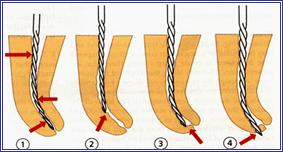
Apex Locators :
Sonar was invented during World War II to find and destroy Nazi submarines. A similar technology is currently being used to find the open ends of root canals. Year ago a dentist used the tooth's x-ray to decide where to end the root canal filling. This was sometimes a major problem and the filling material went out of the tooth. Sometimes the filling material would not go far enough and a cave was created for bacteria to live and grow in.
Today, finding where the end of the canal is much simpler. A sound wave is passed though the canal and the apex locator listens for the sound that bounces back off the sides of the canal. The sound changes when you get to the end of the tooth. This change in sound tells the dentist where to end the filling material. The end of root canal is called the apex.
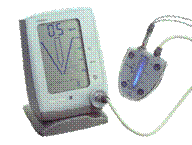
High Torque Handpieces
Regular dental handpieces turn using compressed air. New types of motor driven handpieces are much stronger than regular air driven handpieces. These new handpieces can be used to turn dental instruments with a lot more force and a lot more control which can protect the endodontic files from fracture in the root canals. Root canals also can be more easily shaped using high torque handpieces.
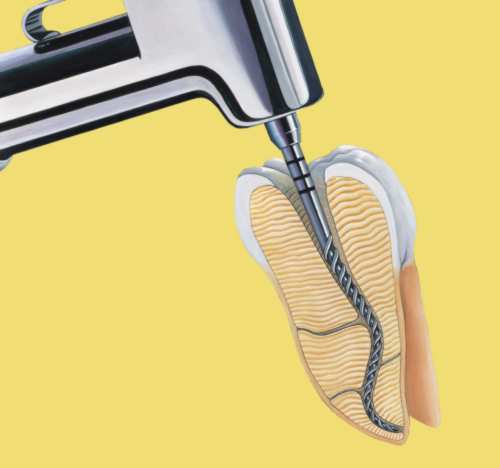
Heated Plugger
Gutta percha is a rubber like material that is commonly used to fill a root canal after the dentist has shape the canal. Years ago several pieces of gutta percha were pressed together to fill a canal. This was done at room temperature.
Instruments are available today that heat up while they press the gutta percha sticks together. The heat helps fuse the gutta percha pieces together and seals the canal extremely well(three-dimensional).
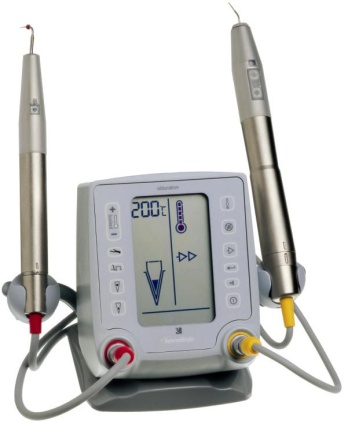
Non Allergenic Endodontic Sealers
In addition to the fused gutta percha, dentists use a sealer to seal up any irregularities in the walls of the root canal. Years ago many of the sealers used irritated the surrounding bone if this material got out of the end of the tooth. Today, many non allergenic sealers have been invented that will not irritate the bone if some of the sealer gets out of the tooth. In fact, dentists want some of this bio-compatible sealer to completely seal the end of the tooth and around the tooth apex.
There are a lot of myths and unwise tales about root canal treatment. The truth is, it i s usually a comfortable experience and should not be feared. New and effective dental anaesthetics are also now available that help make root canal treatment as comfortable as most dental procedures.
